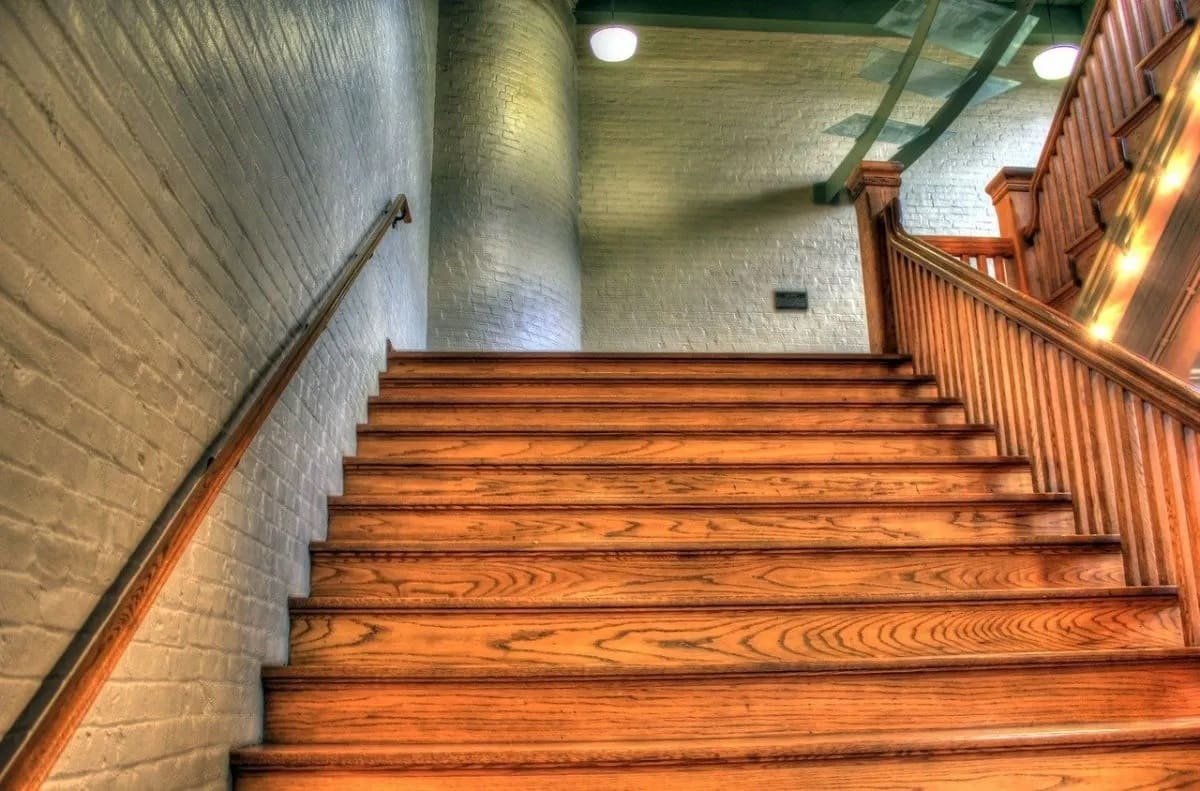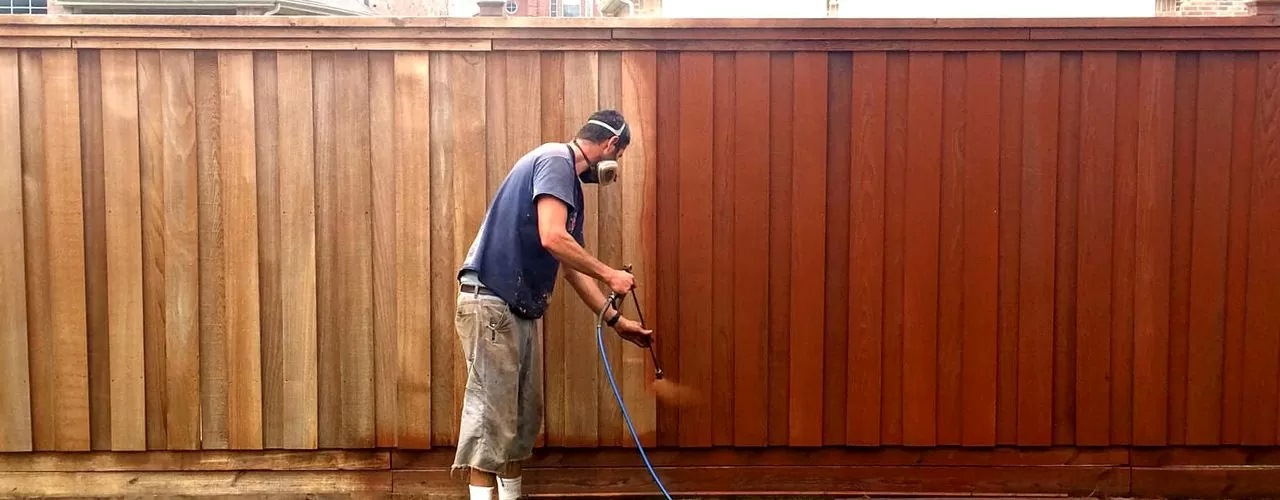

Articles
How To Protect Outdoor Wooden Furniture
Modified: August 31, 2024
Discover effective ways to protect your outdoor wooden furniture from weather damage and prolong its lifespan. Learn how to care for your beloved furniture and keep it looking great.
(Many of the links in this article redirect to a specific reviewed product. Your purchase of these products through affiliate links helps to generate commission for Storables.com, at no extra cost. Learn more)
Introduction
Outdoor wooden furniture adds a touch of natural beauty and warmth to any outdoor space. Whether you have a cozy patio, a spacious deck, or a sprawling garden, wooden furniture can create a welcoming and comfortable ambiance for you, your family, and your guests. However, being exposed to the elements can take a toll on outdoor wooden furniture, causing it to fade, crack, or deteriorate over time.
In order to make your outdoor wooden furniture last and maintain its original beauty, it’s important to take proactive measures to protect it. By selecting the right type of wood, applying a protective finish, using weatherproof covers, and practicing regular cleaning and maintenance, you can significantly extend the lifespan of your outdoor furniture.
In this article, we will guide you through the process of protecting your outdoor wooden furniture, sharing valuable tips and techniques to keep it in top condition for years to come.
Key Takeaways:
- Choose durable woods like teak or cedar and apply protective finishes to create a barrier against moisture and UV rays, extending the lifespan of outdoor wooden furniture.
- Use weatherproof covers and avoid direct sunlight and moisture to prevent damage and deterioration, ensuring the beauty and integrity of outdoor wooden furniture.
Read more: How To Paint Wooden Outdoor Furniture
Choosing the Right Type of Wood
When it comes to outdoor furniture, not all types of wood are created equal. Some woods are naturally more resistant to weather and decay, making them ideal for outdoor use. Here are a few popular choices:
- Teak: Teak is highly regarded for its durability and natural resistance to rot and insects. It has a beautiful golden color that weathers to an attractive silvery gray over time. Teak furniture requires minimal maintenance and can last for decades.
- Cedar: Cedar is another excellent choice for outdoor furniture. It is known for its natural oils that help protect it from insects, decay, and weathering. Cedar has a distinct aroma and is known for its rich, reddish-brown color.
- Redwood: Redwood is a popular choice for outdoor furniture due to its natural resistance to insects and decay. It has a stunning reddish-brown hue and is known for its durability. Redwood can withstand various weather conditions, but regular maintenance is still necessary to preserve its appearance.
- Acacia: Acacia is a sustainable and budget-friendly option for outdoor furniture. It is durable and resistant to moisture, making it suitable for outdoor use. Acacia furniture is available in various shades, ranging from light honey to deep mahogany.
It’s important to note that regardless of the wood type you choose, outdoor wooden furniture will still require regular maintenance to protect it from the elements. Applying a protective finish is crucial to extend its lifespan and maintain its beauty.
Applying a Protective Finish
Applying a protective finish is a crucial step in preserving the beauty and longevity of your outdoor wooden furniture. A protective finish creates a barrier between the wood and the elements, preventing moisture, UV rays, and other environmental factors from causing damage. Here are some steps to follow when applying a protective finish to your outdoor furniture:
- Clean the furniture: Before applying a finish, make sure your furniture is clean and free from dirt, dust, and any previous finishes. Use a mild detergent and water to gently clean the surfaces, and allow the furniture to dry completely.
- Sand the surfaces: Use sandpaper or a sanding block to smooth out any rough spots or imperfections on the wooden surfaces. Sanding will help the finish adhere better and give you a smoother final result.
- Choose the right finish: There are various types of finishes available, such as oils, varnishes, and stains. Consider the level of protection you desire and the look you want to achieve. For a natural look, you can opt for penetrating oils like teak oil or linseed oil. Varnishes provide a glossy finish and offer superior protection against moisture. Stains add color to the wood while still allowing the grain to show through.
- Apply the finish: Follow the instructions on the finish product for the best application method. Use a brush or a cloth to evenly coat the wooden surfaces. Apply the finish in thin, even layers, and allow each coat to dry completely before applying the next one. Multiple coats may be necessary for adequate protection.
- Consider maintenance: Depending on the type of finish you choose, maintenance may be required periodically. Some finishes may need to be reapplied every few years to ensure optimal protection. Regular cleaning and inspection of the furniture will also help you identify any issues or areas that may need touch-ups.
Remember to work in a well-ventilated area and follow the manufacturer’s instructions for safety precautions and drying times. Applying a protective finish will not only enhance the appearance of your outdoor wooden furniture but also prolong its lifespan in the face of harsh outdoor conditions.
Using Weatherproof Covers
Even with a protective finish, it’s always a good idea to provide additional protection for your outdoor wooden furniture, especially during periods of extended exposure to harsh weather conditions. Weatherproof covers are a simple yet effective solution to shield your furniture from rain, snow, and intense sunlight. Here’s how to use weatherproof covers:
- Select the right size: Ensure that you choose covers that are specifically designed for your furniture’s dimensions. Covers that are too big may be prone to moisture buildup, while covers that are too small may not provide adequate protection.
- Opt for high-quality materials: Look for covers made from durable, water-resistant materials such as polyester or vinyl. These materials offer better protection against moisture and resist tearing or fading over time.
- Properly secure the covers: Make sure the covers fit snugly over your furniture and have secure fastening mechanisms, such as straps or drawstrings. This will prevent the covers from being blown away by strong winds and keep them firmly in place.
- Remove any moisture: Before covering your furniture, ensure that it is completely dry. Moisture trapped under the cover can lead to mold or mildew growth and cause damage to the wood.
- Periodically remove the covers: While covers offer protection, it’s also important to periodically remove them and allow the furniture to breathe. This will prevent moisture accumulation and allow for better air circulation, reducing the risk of damage from condensation.
- Clean and store the covers properly: Regularly clean the covers according to the manufacturer’s instructions. Before storing them for the offseason, ensure they are completely dry to prevent mold or mildew growth. Store the covers in a clean, dry space to keep them in good condition for future use.
Using weatherproof covers adds an extra layer of protection to your outdoor wooden furniture, helping to prolong its lifespan and maintain its original appearance. They are a cost-effective investment that can save you time and effort in cleaning and maintenance in the long run.
Cleaning and Maintenance Tips
Regular cleaning and maintenance are essential to keep your outdoor wooden furniture looking its best and to prevent any damage from occurring. Here are some tips to help you properly clean and maintain your outdoor furniture:
- Remove debris: Periodically remove leaves, dirt, and other debris from your furniture using a brush or a soft cloth. This will prevent buildup and minimize the risk of scratches.
- Gentle cleaning: Use a mild soap or a dedicated wood cleaner diluted in water to clean your furniture. Avoid harsh chemicals or abrasive cleaners that can damage the wood’s surface. Gently scrub the surfaces with a soft brush or cloth, and rinse thoroughly with water.
- Address stains promptly: If you notice any food or beverage stains on your furniture, address them promptly to prevent them from becoming permanent. Use a gentle stain remover specifically designed for wood and follow the instructions carefully.
- Regularly inspect for damage: Routinely check your furniture for any signs of damage, such as cracks, splintering, or loose joints. Address any issues promptly by repairing or replacing parts to prevent further deterioration.
- Reapply protective finish: Over time, the protective finish on your outdoor wooden furniture may wear off. Reapply the finish as needed to maintain its protective properties. This will help guard against moisture, UV rays, and other environmental factors.
- Protect from scratches: Place felt pads or rubber feet under heavy objects or furniture legs to prevent scratching the wood when moving or rearranging your furniture.
- Store cushions and accessories: If you have cushions or other accessories that are not weather-resistant, store them indoors when not in use. This will prevent them from getting damaged by rain or prolonged exposure to sunlight.
- Regularly oil or seal: Depending on the type of wood and finish used, you may need to regularly apply a fresh coat of oil or sealant. This will help maintain the wood’s natural luster and protect it from the elements. Follow the manufacturer’s instructions for the specific product you’re using.
By following these cleaning and maintenance tips, you can ensure that your outdoor wooden furniture remains in excellent condition, prolonging its lifespan and allowing you to enjoy its beauty for years to come.
To protect outdoor wooden furniture, apply a sealant or varnish to create a barrier against moisture and UV rays. Reapply annually for best results.
Read more: How To Clean Wooden Outdoor Furniture
Avoiding Direct Sunlight and Moisture
Direct sunlight and excessive moisture are two major factors that can cause damage to your outdoor wooden furniture. By taking precautions to minimize their impact, you can help preserve the beauty and integrity of your furniture. Here are some tips to avoid direct sunlight and moisture:
- Shade the furniture: If possible, place your outdoor wooden furniture in a shaded area. Direct sunlight can fade and dry out the wood, leading to discoloration and cracking over time. Use umbrellas, awnings, or pergolas to provide shade and protect your furniture from prolonged sun exposure.
- Use protective covers: As mentioned earlier, weatherproof covers can provide an additional layer of protection against moisture. Even when furniture is not in use, cover it to shield it from rain or dew that can seep into the wood and cause rot or mold.
- Avoid placing furniture on grass or wet surfaces: Moisture from the ground can be absorbed by the wooden legs and promote decay. Place furniture on a dry, level surface, such as a wooden deck or patio stones, to prevent moisture buildup.
- Utilize ventilation: Good air circulation is crucial to prevent moisture from being trapped around your wooden furniture. Ensure that there is ample space between the furniture and nearby structures to promote airflow and prevent mold or mildew growth.
- Consider a sealant: Applying a protective sealant to your outdoor wooden furniture can help create a barrier against moisture. Sealants are particularly beneficial for furniture that is consistently exposed to rain or high humidity environments.
- Monitor for water damage: Regularly inspect your furniture for signs of water damage, such as warping, swelling, or mold growth. Act promptly if you notice any issues to prevent further damage and preserve the structural integrity of the wood.
By taking these preventive measures to avoid direct sunlight and moisture, you can significantly extend the lifespan of your outdoor wooden furniture and keep it looking beautiful for years to come.
Repairing Damaged Wooden Furniture
Over time, even with proper care, outdoor wooden furniture may experience damage or wear and tear. It’s important to address any issues promptly to prevent further deterioration. Here are some tips for repairing damaged wooden furniture:
- Identify the problem: Assess the extent of the damage and identify the specific areas that need attention. This could include cracks, splits, loose joints, or broken pieces.
- Repair loose joints: If you notice that joints have become loose, use wood glue to reattach them. Apply the glue to both surfaces, press them together firmly, and wipe off any excess glue. Use clamps or heavy objects to keep the joint secure while the glue dries.
- Fill cracks and splits: For small cracks and splits in the wood, you can use wood filler. Apply the filler to the damaged area, smooth it out with a putty knife, and let it dry. Sand the filled area to ensure a smooth finish.
- Replace broken pieces: If a piece of your furniture is irreparably damaged, you may need to replace it with a new piece of wood. Measure the dimensions carefully and obtain a matching replacement from a local hardware store or specialized woodworking shop.
- Sand and refinish: After any repairs have been made, sand the affected area and surrounding surfaces to create a smooth and even finish. Apply a fresh coat of protective finish or sealant to ensure a consistent appearance.
It’s important to note that more extensive repairs may require the assistance of a professional woodworker or furniture repair specialist. If you are unsure or uncomfortable tackling a repair yourself, it’s best to seek professional help to ensure the proper restoration of your furniture.
By promptly addressing and repairing any damage, you can prolong the lifespan of your outdoor wooden furniture and maintain its integrity for years to come.
Storing Furniture during the Off-Season
During the off-season or periods when you won’t be using your outdoor wooden furniture, it’s important to properly store it to protect it from the elements and extend its lifespan. Here are some tips for storing your furniture:
- Clean and dry: Before storing your furniture, give it a thorough cleaning to remove any dirt, dust, or stains. Ensure that the furniture is completely dry to prevent mold or mildew from forming during storage.
- Disassemble if possible: If your furniture is modular or can be disassembled, it’s a good idea to take it apart for easier storage. This will also help prevent any damage that could occur from being stacked or squeezed together tightly.
- Wrap in protective covering: Use blankets, bubble wrap, or furniture covers to wrap each piece individually. This will provide an additional layer of protection against dust, scratches, and potential damage during storage.
- Choose a suitable storage location: Find a dry and well-ventilated storage area such as a garage, shed, or basement to store your furniture. Avoid areas that are prone to moisture or extreme temperature fluctuations, as these can lead to wood warping or rot.
- Elevate from the ground: Place your furniture on pallets or blocks to elevate it off the ground. This will protect it from potential water damage in case of any leaks or moisture seepage.
- Store cushions separately: If you have cushions or upholstery, it’s best to store them separately in a dry and clean space to prevent them from absorbing moisture or attracting pests.
- Regularly inspect and maintain: Periodically check on your stored furniture to ensure there are no signs of damage, mold, or pests. Apply a fresh coat of protective finish or sealant if necessary before using the furniture again.
Proper storage plays a critical role in maintaining the condition and longevity of your outdoor wooden furniture. By following these steps, you can protect your investment and ensure that your furniture remains in excellent shape during the off-season.
Conclusion
Outdoor wooden furniture adds beauty and charm to any outdoor space, creating a welcoming and comfortable environment for relaxation and entertaining. However, to keep your furniture looking its best and to ensure its longevity, it’s important to take proactive measures to protect it from the harsh elements.
By choosing the right type of wood, applying a protective finish, using weatherproof covers, and practicing regular cleaning and maintenance, you can significantly prolong the lifespan of your outdoor wooden furniture. Choosing durable woods such as teak or cedar, and applying a protective finish, creates a barrier against moisture and UV rays, keeping the wood in excellent condition.
Using weatherproof covers and avoiding direct sunlight and moisture are crucial steps in preventing damage and deterioration. Covers provide an additional layer of protection, while avoiding direct sunlight and moisture helps preserve the wood’s appearance and structural integrity.
In the event that your outdoor wooden furniture does experience damage, it’s important to address it promptly. Repair loose joints, fill cracks and splits, and replace broken pieces as needed. Regularly inspecting and maintaining your furniture will help prevent further damage and ensure its longevity.
During the off-season, proper storage is essential. Clean and dry your furniture, disassemble if possible, and store it in a dry, well-ventilated area. Elevate the furniture off the ground and store cushions separately to protect them from moisture and pests. Regularly inspect and maintain your stored furniture to ensure it remains in excellent condition.
By following these steps and taking proactive measures to protect your outdoor wooden furniture, you can enjoy its beauty and functionality for years to come. With proper care, maintenance, and attention, your furniture will continue to enhance your outdoor space and provide the perfect setting for enjoying the great outdoors.
Frequently Asked Questions about How To Protect Outdoor Wooden Furniture
Was this page helpful?
At Storables.com, we guarantee accurate and reliable information. Our content, validated by Expert Board Contributors, is crafted following stringent Editorial Policies. We're committed to providing you with well-researched, expert-backed insights for all your informational needs.















0 thoughts on “How To Protect Outdoor Wooden Furniture”